The Symbolism of Motifs and Exploring Weave Patterns in Kanjivaram Silk Saree Designs

Every thread woven into a Kanjivaram silk saree tells a story, a tale of artistry, culture, and tradition.
These exquisite sarees, originating from the town of Kanchipuram in Tamil Nadu, India, are renowned not only for their rich history but also for the intricate motifs and woven patterns that adorn them.
In this article, we will delve into the symbolism behind the motifs and explore the diverse weave patterns that make Kanjivaram silk sarees truly unique.
Symbolism of Motifs in Kanjivaram Silk Sarees
Motifs in Kanjivaram silk sarees are more than just decorative elements; they carry profound symbolism that reflects the values, beliefs, and heritage of the region.
These motifs are often inspired by nature, mythology, and religious symbols, adding a layer of depth to the saree's design.
1. Peacock Motif
The peacock is a recurring motif in Kanjivaram sarees, symbolizing beauty, grace, and pride. It is associated with Indian mythology, where the peacock is considered the vehicle of Lord Murugan, the God of War. The motif showcases the idea of embracing one's uniqueness and inner beauty.
2. Temple Motif
Temples hold great significance in Indian culture, and this motif pays homage to the intricate architectural marvels that dot the landscape. The temple motif is a representation of spirituality, devotion, and the connection between the earthly and divine realms.
3. Mango Motif
The mango motif is a symbol of fertility, abundance, and prosperity. In Indian culture, the mango is often referred to as the "king of fruits," and its presence in a saree design brings a sense of auspiciousness and optimism.
4. Lotus Motif
The lotus is a sacred flower in Hinduism and Buddhism, representing purity, enlightenment, and rebirth. Incorporating the lotus motif into a Kanjivaram silk saree design signifies spiritual growth and the journey toward self-discovery.
5. Elephant Motif
Elephants are revered in Indian culture as symbols of strength, wisdom, and good fortune. An elephant motif in a Kanjivaram saree is a nod to these attributes.
6. Fish Motif
Fish motifs hold significance in Indian culture, symbolizing fertility, abundance, and transformation. They are often used in wedding sarees to bless the couple with prosperity and a fruitful life together.
7. Sun and Moon
The sun symbolizes energy and power, while the moon represents tranquility and feminine energy. Combining these motifs in a saree design showcases the balance between these contrasting yet complementary forces.
Exploring Weave Patterns in Kanjivaram Silk Sarees

The weave patterns in Kanjivaram silk sarees are a testament to the craftsmanship and skills passed down through generations of weavers.
Each pattern tells a story, displaying the intricacy and dedication required to create these masterpieces.
1. Checks or "Kattam" Patterns: The classic checkered pattern is a hallmark of Kanjivaram sarees. The symmetry and precision of this pattern reflect a sense of balance and harmony, both in design and in life.
2. Stripes or "Veerai" Patterns: Stripes in Kanjivaram sarees symbolize strength, courage, and resilience. The weaving process of these stripes requires great attention to detail, representing the idea that strength lies in the smallest of efforts.
3. Buttis or Small Motifs: Buttis are small, intricate motifs scattered across the saree's body. These motifs can range from floral patterns to geometric shapes. They signify the beauty in diversity and the importance of paying attention to the finer aspects of life.
4. Peacock Eye or "Mayil Kann" Pattern: This pattern resembles the eye of a peacock feather and is often used in Kanjivaram sarees. It represents protection, wisdom, and the watchful gaze that guides one through life's journey.
Preserving the Legacy
As the world modernizes, the art of Kanjivaram silk weaving faces challenges. However, efforts are being made to ensure its continuity.
Organizations and artisans are collaborating to adapt these traditional designs to contemporary tastes while preserving the essence and authenticity of the craft.
Conclusion
Kanjivaram silk sarees are not just pieces of clothing; they are an embodiment of culture, symbolism, and artistry. The motifs and weave patterns in these sarees hold stories of generations past, reflecting the values and beliefs of a rich heritage.
As you drape yourself in a Kanjivaram silk saree, remember that you are adorning more than just a garment; you are enveloping yourself in a tapestry of tradition, symbolism, and exquisite craftsmanship that stands as a testament to the beauty of human creativity.

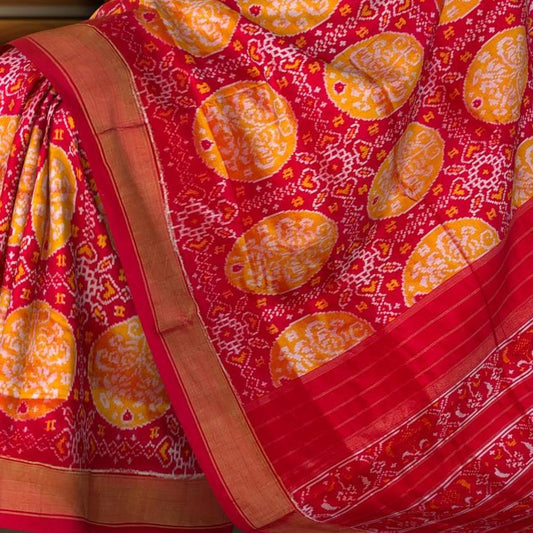
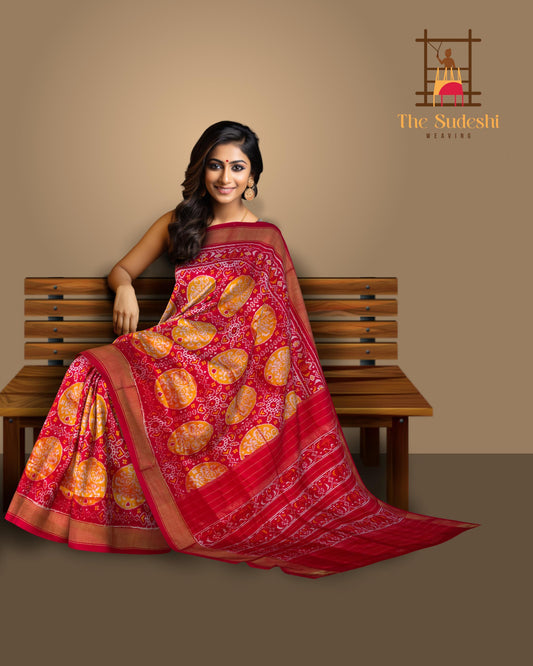
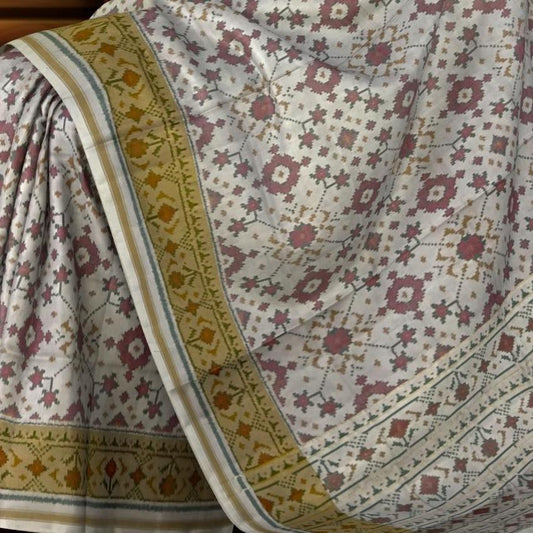
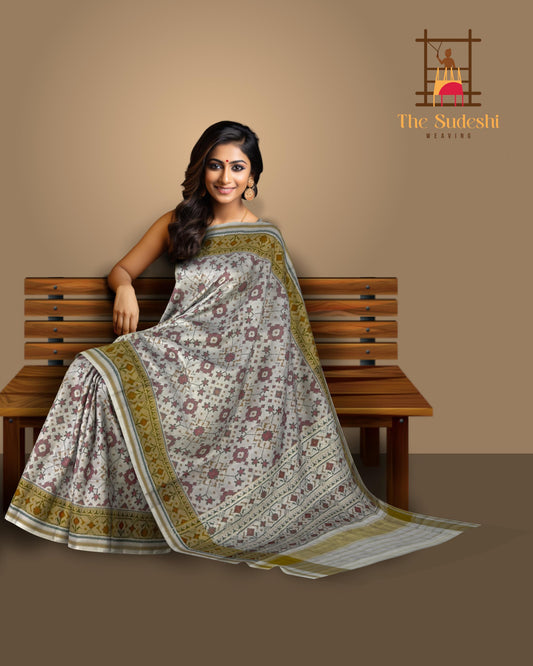
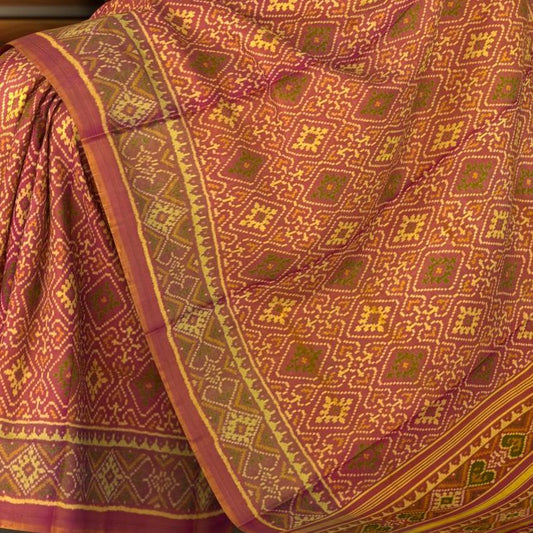
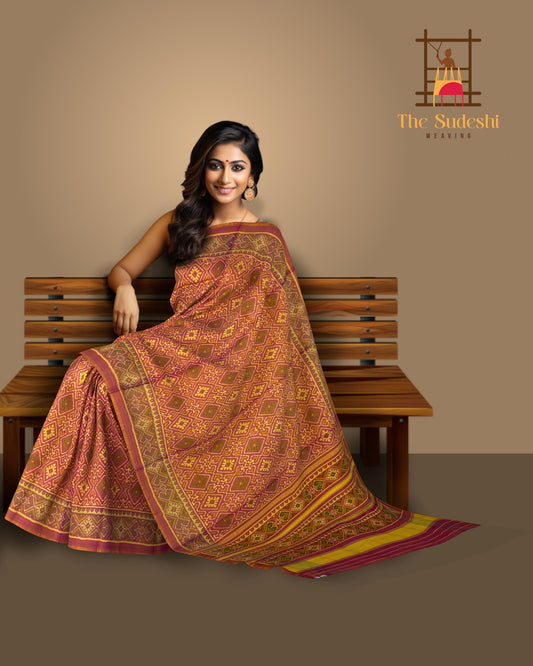
Leave a comment
Please note, comments need to be approved before they are published.